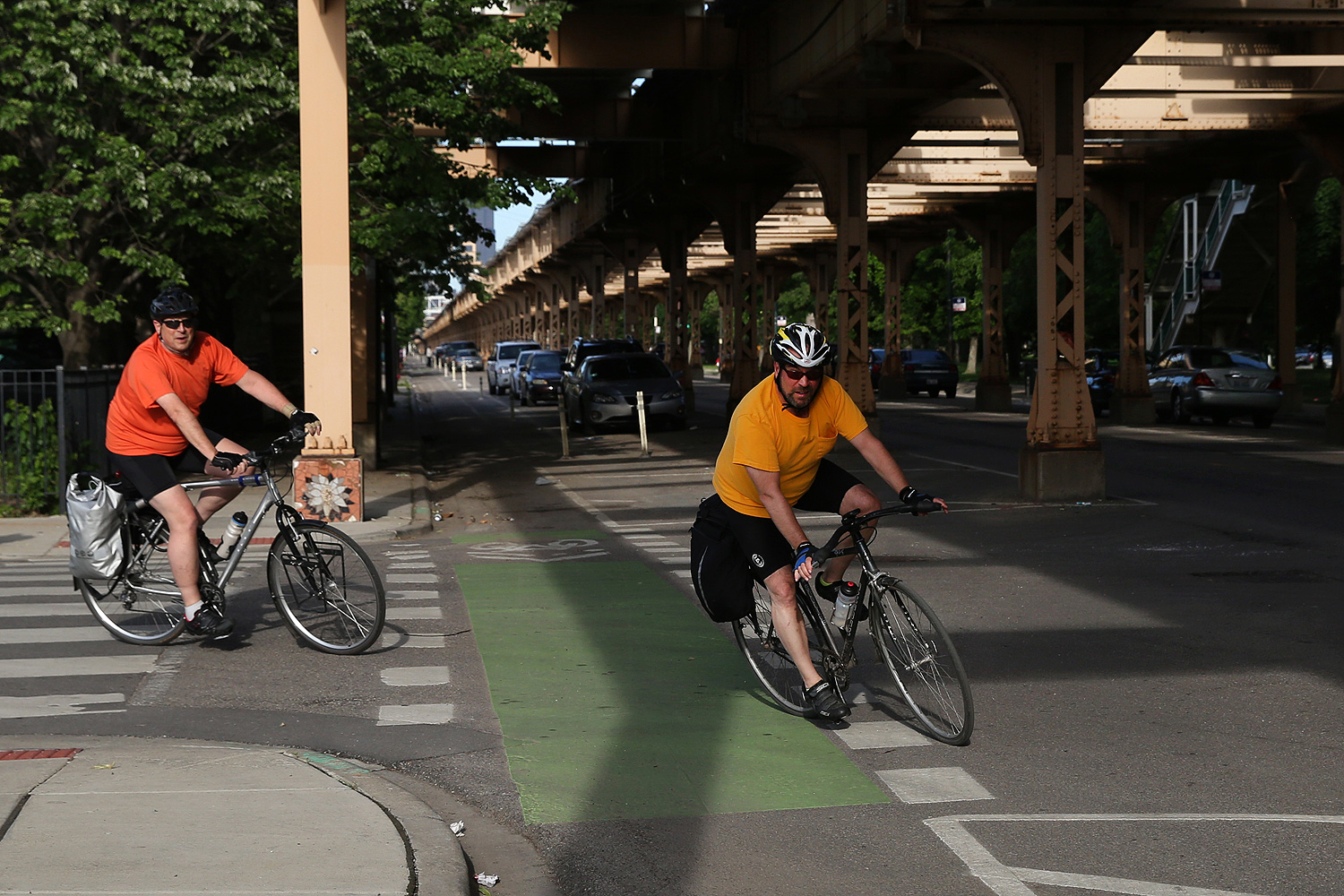WBEZ's typically excellent Curious City series just took on the issue of how strictly the city enforces bike laws. They found some surprising numbers, especially one: the number of reported bicycle violations in the city went from virtually none in the last decade to almost 5,000 last year, the vast majority of which are for riding on the sidewalk. (I've written before about how Chicago's prohibition against riding on the sidewalk is actually pretty unusual.)
This came as a surprise—as the story suggests, it certainly seems rare to see a cyclist pulled over for a moving violation. I'm a near-daily bike commuter, yet have only seen one of the stakeouts mentioned in the article, and I don't think I've ever seen a bike pulled over.
But then again, I also drive almost every day, too, and for most of this year that's involved at least some time on an expressway. And despite the frequent poor driving, I don't see many cars getting pulled over on those, either. Which made me wonder: how does enforcement of driving compare to enforcement of cycling?
Let's start with the expressways:
The data, gathered in April, May and September, showed that, depending on which tollway stretch was tested, 91 to 98 percent of drivers exceeded the 55 mph speed limit. In those stretches, the average speed ranged from 66 to 70 mph.
[snip]
Tollway data showed that the 85th percentile speed ranges from 71 to 75 mph.
While high tolerances have been around for years, speeders have benefited from a new trend: lower odds of being cited.
Troopers [in 2012] totaled an average of 120 speeding tickets a day on metro Chicago tollways and freeways, which is 24 percent lower than the 159 a day written in 2010. At the same time, the number of sworn state police officers dropped 11 percent from 2010 to 2012, according to data the agency provided the FBI.
Chicago, meanwhile, has about 15,000 bicycle commuters per day. Since that's just commuters, it's almost certainly low. Just to make the math easy, let's say 50,000 people ride a bike every day in Chicago.
According to the numbers obtained by WBEZ, Chicago police reported around 4,500 cycling violations, or about 12 per day, among tens of thousands of cyclists in 2014. In 2012, state police were handing out about 120 speeding tickets per day, or about ten times as many cycling violations, to hundreds of thousands, perhaps millions of vehicles—the Dan Ryan, Eisenhower, Congress, and Kennedy add up to around 800,000 vehicles per day according to IDOT, with 400,000 using the Circle Interchange each day.
Granted, those 4,500 cyclist citations were unusually high—some 2,000 more than the previous year. But in the context of speeding tickets, the lack of enforcement for bike laws—again, mostly for riding on the sidewalk—doesn't seem as dire in comparison.
In terms of traffic enforcement on city streets, perhaps a good point of comparison is traffic stops. In 2010, IDOT reported 165,217 stops in the city of Chicago in 2010, down 31,470 from the prior year. That averages out to about 450 per day. In 2009, that would have been 539, so let's split the difference and say 500 traffic stops per day. That's about 40 times the number of citations handed out to cyclists in 2014.
There's no way of knowing how many people drive in the city, but we can use the same commuter data from the Census to get a sense of what the ratios might be. According to Census data, 50.3 percent of commuters in Chicago drove alone, and another 9.3 percent carpooled, for a total of about 720,000 people. Assuming 2.5 passengers per carpool, a reasonable assumption, that's roughly 650,000 vehicles.
And, again, the data we have suggest there are about 15,000 bike commuters in the city.
650,000 divided by 15,000 equals…43.
[Update: According to the Census's American Community Survey for 2014, the most recent numbers we have, the number of bike commuters in the city of Chicago is 21,000, while the number of vehicles used in commuting (people driving alone and carpoolers) is about 660,000. Using those numbers, the ratio is 31 vehicles to bicycles. H/t Michelle Stenzel.]
So if you're comparing traffic stops to cyclist citations, the (extremely rough) ratios are pretty close. It's something of an apples to oranges comparison, especially with speed camera enforcement, but comparing enforcement for the two very different modes of transportation is tricky.
Again, 2014 was an unusual year for cycling enforcement, which increased substantially over the prior year and from virtually no enforcement the decade before. If that's the new normal, though, the odds are evening out.



